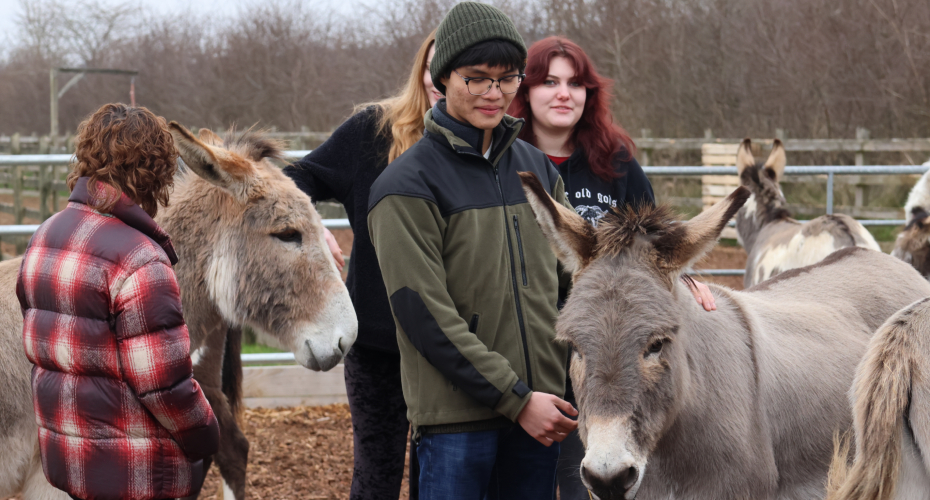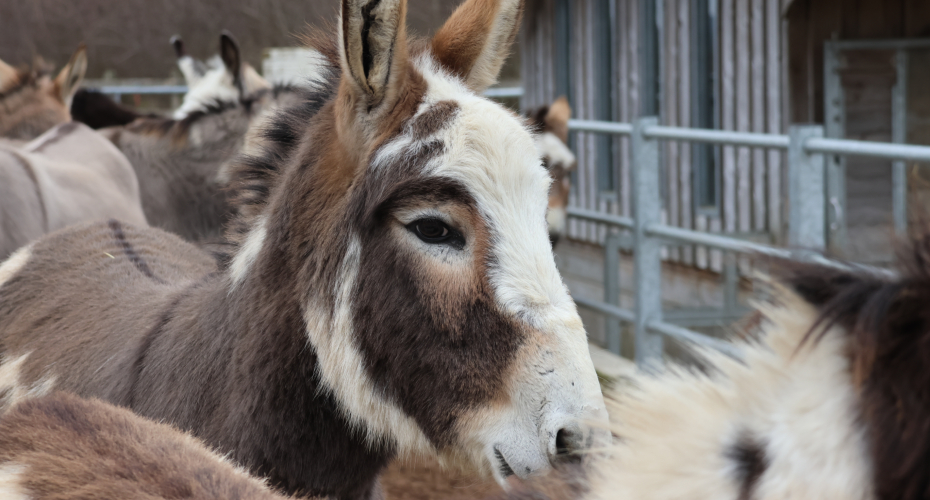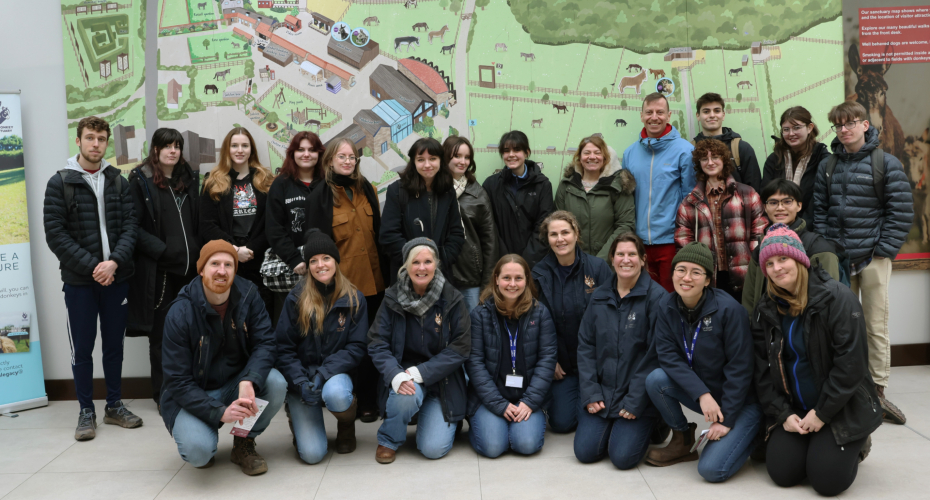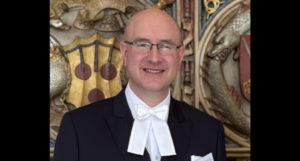New course offers first-ever critical analysis of the representation of donkeys in film

The representation of donkeys in cinema is the focus of a new and unique course that has been launched in partnership between a leading university and an international animal welfare charity.
Film studies undergraduates at the University of Exeter electing to take the ‘Scrublands, Sanctuary, Screens’ option as part of their degree, will work with staff at The Donkey Sanctuary in Sidmouth, Devon, observing and recording their interactions with the animals.
They will also study how donkeys have been portrayed and treated across films as varied as The Banshees of Inisherin, Shrek, Jesus of Nazareth and EO, as well as in television and contemporary media.
Together, this will enable the students to develop a deeper understanding of the contrast between the lived experiences of donkeys and their screen portrayals, where they have historically been characterised in human terms, such as stubborn or comedic. The students will also create video diaries that will be presented to the Sanctuary and its Education Centre.

“When the actor Colin Farrell and the director Martin McDonagh both acknowledged Jenny the Donkey in their acceptance speeches for Banshees at The Golden Globes, it raised fascinating questions for how we think about interpreting animal performance,” says Dr Fiona Handyside, co-lead for the module in Exeter’s Department of Communications, Drama and Film. “And that has led to this first-of-its-kind module, where we bring together the Film department’s insight of representation and performance, with The Sanctuary’s expertise and knowledge in providing holistic care to donkeys and thinking about their contribution to society.”
Scrublands, Sanctuary, Screens: Co-Creating Knowledges alongside Donkeys formally launched this term, and runs once per year for 11 weeks. Over its duration, students will initially explore the field of critical animal studies and eco-criticism, viewing the donkeys through The Sanctuary’s live webcams, and considering both why people devote so much time to looking at ‘animals’ and the complexities of running a sanctuary. It also explores the dynamics of companionship with animals, and whether it is possible to make films and undertake research that is not solely centred on the human perspective.

The module looks at how films have attempted to portray the inner lives of donkeys, how they have been personified in animation, and how they have been portrayed in fables and fairy tales, Christian narratives, and documentaries.
At the halfway point, students visit The Sanctuary, and last week, the first cohort of undergraduates spent a day with staff learning about the residents, undertaking activities with them, and observing their behaviours and interactions.
The Donkey Sanctuary was founded in 1969 and has grown to become one of the foremost animal welfare organisations of its type in the world, operating across Europe and with partners in Africa, Asia and The Americas. The new module represents the first time it has worked with a humanities faculty at a university.
Deputy CEO of The Donkey Sanctuary, Dr Faith Burden, has co-authored more than 100 peer-reviewed articles and is a globally recognised expert on the health and welfare of donkeys and mules. She welcomes the potential positive impact the module will have on the welfare of donkeys and other animals in film, saying:
“It’s fantastic to know that a new generation of filmmakers will have a critical understanding of the link between the way animals are portrayed on-screen and the values we accord them in real life, and the implications this has for their welfare. For too long donkeys have been misrepresented in popular culture and this has done them a great disservice. By observing and spending time with the donkeys here in Sidmouth, these students will have the chance to develop a lifelong appreciation of what sensitive and intelligent animals they really are, and the impact their work can have on them.”
“No one has ever attempted this kind of collaboration before – it’s an extraordinary opportunity for a truly joint venture between The Sanctuary and the University,” added Dr Benedict Morrison, Senior Lecturer in Film, and fellow co-lead for the module. “Its aim is to transform how we think about our relationship with not just donkeys, but animals more widely – or ‘more than human animals’ as we refer to them in academic study. In partnering with the Sanctuary, the donkeys are not just distant objects of study; they become participants, ‘in conversation’ with the students.
“The attempt by contemporary media to reduce donkeys to a set of symbolic meanings – the stubborn, the stupid, the indolent – is deeply unfair. We hope that through the opportunity to speak with people who work with them every day, we can get some sense of the real lived experience of donkeys.”




